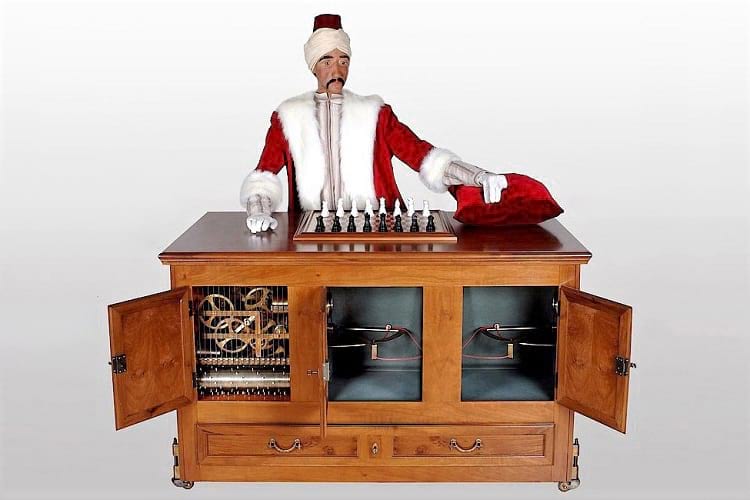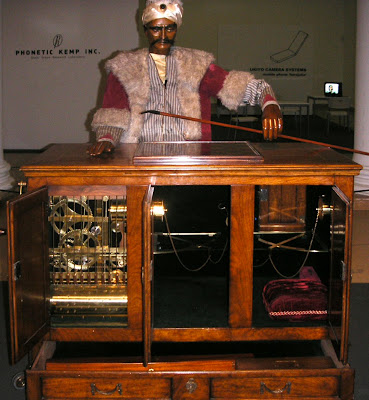

If you love science fiction, you will likely enjoy both the mechanical wizardry in the book and the Enlightenment themes. Is The Secrets of the Chess Machine science fiction? Historical fiction? Both? Neither? In the end, it doesn't matter. The difference, she said, was that the British know the difference between performance and self-promotion.) She argued that whereas Americans go all ga-ga over his tricks, the UK public reacted with mocking and hurled fruit when Blaine suspended himself over the Thames in a glass box without food. (A writer recently noted the difference between the British and Americans when it came to showmen such as David Blaine, who likes to pull public stunts with his illusions.

Technological marvels still earn people millions of dollars and years of fame, but then so do fake spectacles such as professional wrestling and public magicians.

In our own modern times, we also have a complicated relationship with chicanery and spectacle. But Löhr explains in his own words that the dividing line between science and showmanship was a bit different in those days, and von Kempelen freely tramped across the line with ease. In the novel, he worries about a loss of his status should he be found out, and this provides much of the drama between him and his assistants. It is fascinating to follow von Kempelen's little charade and to wonder how it would be greeted today. (A replica of the original Turk is pictured above the original was destroyed by fire in 1854.) But, as Löhr writes in the author notes at the end of his book, there is a fair amount of the story that Löhr needed to fictionalize, including the sympathetic dwarf who is both von Kempelen's aid and antagonist, as well as von Kempelen's character, which Löhr admits deviates in the book from the known facts about the inventor and author. Von Kempelen really did construct the machine he really did have a small person inside playing the chess matches and he really did wow the public of late 18th-century imperial Europe. Unknown to me until I was mostly finished reading the book is that it is based on a very true story. But in fact there was a human inside, a dwarf who was able to remain unseen because of his small size and some false-backed drawer wizardry. Built in humanoid form and seated at a cabinet with a chess game atop it, the Turk - so-called because of its turban and the mystery such a connection provided to the Austrians in the age of the Ottomans - had back doors and front drawers and more that could be opened to give the audience a peek inside, demonstrating that there wasn't a human inside performing the automaton's chess moves.

Unknown to the admirers but suspected by few, the automaton was a fraud.


 0 kommentar(er)
0 kommentar(er)
